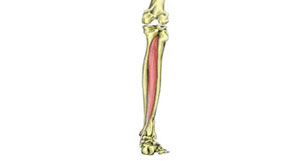Joint Action: Plantar flexion
The following muscles produce Plantar flexion at the ankle:
The gastrocnemius muscle is the large calf muscle at the back of the lower leg. It originates above the knee.
Flexor Digitorum Longus causes the toes to grip and mold to the floor’s surface which is vital in maintaining balance
Flexor Hallucis Longus bends the big toe when you curl up your foot. It is called ‘Hallucis’ as the word
Gastrocnemius is the largest and most superficial of the ankle muscles. Together the Gastrocnemius, Soleus, and Plantaris are known as Triceps
Peroneus Brevis is one of the peroneal muscles in the ankle which passes down the outside of the lower leg
Peroneus Longus is one of the peroneal muscle groups which passes down the outside of the lower leg and everts (turn
Soleus is a large muscle, deep to Gastrocnemius. Together the Gastrocnemius, Soleus, and Plantaris are known as Triceps Surae. Soleus is
The Tibialis Posterior is the deepest of all the calf muscles. It helps to support the arch of the foot. Origin: Interosseous
